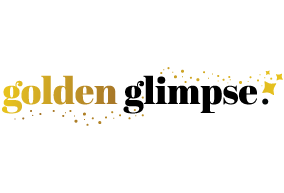In essence, they create the look and feel of a website or application’s user interface. These interfaces should not only be functional, but they should be easy to use and visually appealing. It encompasses all aspects coding jobs of a user’s interaction with a product or service. It’s about crafting the entire user journey, understanding what users need, and creating a seamless experience. With the team aligned on project goals, it’s time to start creating some sketches for the product. This is where user flows and journeys come into play; including these aspects from the beginning help ensure your design makes sense and fulfills the user’s needs.
Building Dynamic Frontend with React JS Cours …
For instance, is it going to have a loyalty program where you gain points for each purchase you make? Perhaps the app allows you to shop online or see the current specials on offer—all of that’s part of the user experience, the UX. Look deeply into digital design and you’ll see that the roles that UX and UI have are different but they’re things that complement each other.
Start With User Flows, Not Features
These guide UX designers in the creation of products and services that are intuitive, meaningful, and effective. UI/UX design is a combination of user experience (UX) and user interface (UI) design. It’s a digital design discipline which focuses on the creation of apps, websites, software, video games, and more.
What is a UX/UI Designer?
As Frank Spillers highlights in his video, understanding the ‘context of use’ is crucial. It involves observing users in their environment and understanding their experiences and needs. This is critical in a world with a diminishing human attention span. Create interface design projects, get feedback, and build a strong portfolio. Enhance your skills by enrolling in the Interaction Design Foundation (IxDF) courses offered in the UI Designer Learning Path. If you’re already working full-time in another field, practice your UX design skills by identifying a potential challenge and designing a solution.
UI vs. UX
These methods are required to be followed by a designer to collect some vital information about his/her product by getting reviews. The User Experience (UX) Design process involves several steps to ensure that the final product is user-friendly and meets the needs of its users. The most delightful, user-friendly interfaces are those that are consistent. The more consistent the UI, the easier it will be for a user to get to grips with. Once the product UI has been finalised, it’s over to the developers to turn the UI designer’s prototypes into a real, working product.
Web Development with HTML5, CSS3 & JavaScript
- Aesthetics also help designers communicate with the internal stakeholders in their companies.
- If you’d like to learn more about UX tools, check out this full guide covering essential tools for UX designers.
- Color, for example, can be a valuable tool for making good-looking layouts understood at a glance.
- Everything you need to know about the field and how to start your career as a UI/UX designer.
- Products undergo many cycles of prototyping, testing and refining before the final product ships.
- User-friendly, universal design is beneficial to everyone, and UX designers are in a position to truly shape the world around us.
Other types of models include workflow models, artifact models, and physical models. I invented the term because I thought human interface and usability were too narrow. I wanted to cover all aspects of the person’s experience with the system including industrial design graphics, the interface, the physical interaction and the manual. Since then the term has spread widely, so much so that it is starting to lose its meaning. Whether you enter a role in UX or UI, gaining UX design skills can help make you a competitive applicant for positions and build a strong foundation for you to expand your UX/UI toolkit. User experience refers to the overall experience of a customer or a user using a product, platform or service.
How to Pick the Right Design Career?
Let’s take a look at the different career paths available in UX/UI design and how each one puts your strengths to work. To test and preview how a layout performs across devices, many designers rely on the built-in responsive preview modes in tools like Figma, Adobe XD, and Sketch. These allow quick adjustments at common breakpoints (mobile, tablet, desktop). For browser-based testing, tools like BrowserStack and Responsively App let designers view their work across different devices and screen sizes without needing the physical hardware.
How do I know if UI or UX is a better fit for me?
That’s UI/UX Designer/Web Designer, SaaS job why collaboration between product designers is so essential for product success. Both UX and UI designers should be involved in brainstorming sessions where they explore how a product will look and work together, and both should be involved in prototyping. For example, UX designers can create low-fidelity sketches for a future interface and let UI designers create a high-fidelity version.
